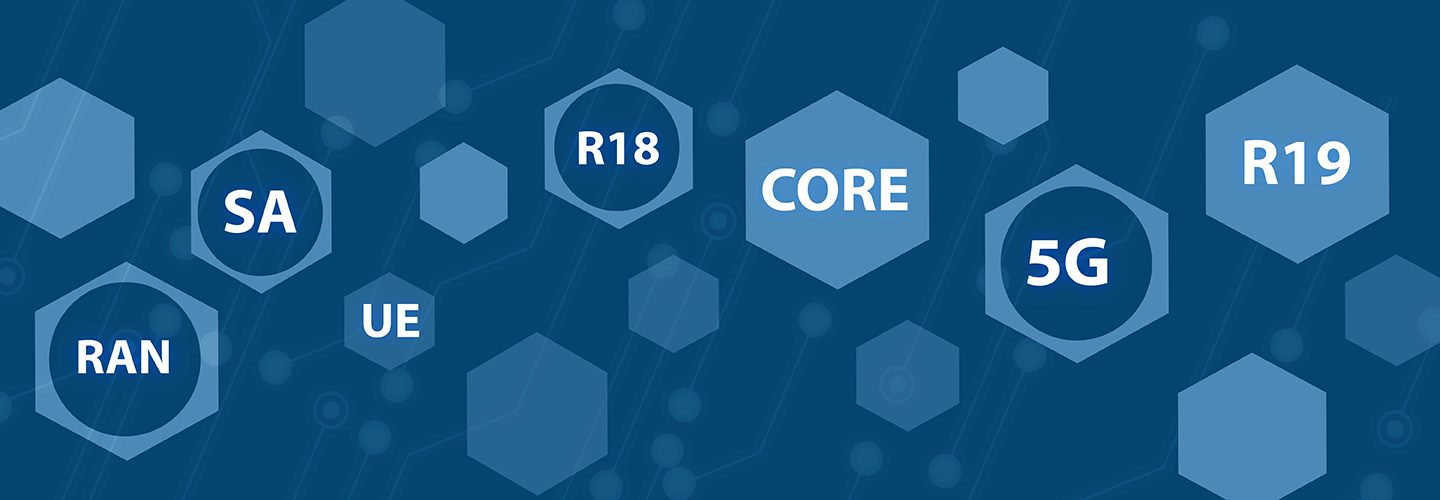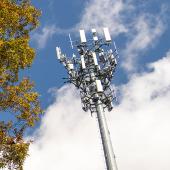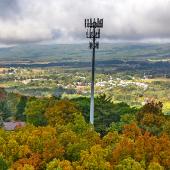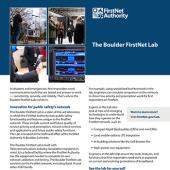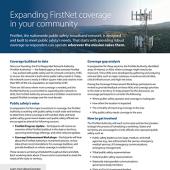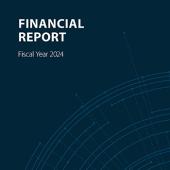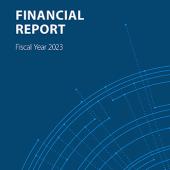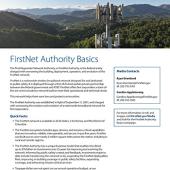This blog is a repost from IWCE’s Urgent Communications, originally published on July 20, 2023.
This blog post is part of the "Tech Talk" series focused on the First Responder Network Authority’s (FirstNet Authority) standards development activities to support public safety. This post recaps discussions linked to public safety and other related topics from the 3GPP Plenary meetings that were conducted in March 2023. The FirstNet Authority represented public safety interests at the Plenary meetings.
Highlights
The 3GPP Plenary meetings took place June 12-16, 2023, in Taipei, Taiwan. The Technical Specification Group (TSG) reports below highlight solid progress on Release 18 (R18) features of interest for public safety, including the completion of the architecture (stage 2) and the steady development on the protocol work (stage 3).
The Plenary meetings also included two important workshops on Release 19 (R19) feature planning. Similar to planning for previous releases, these meetings involved intense discussions on the list of potential features targeted for R19. The FirstNet Authority will be involved in R19 planning activities through the September and December Plenary meetings and will report on progress in our future blog posts. The R19 planned December 2025 end date remains on track.
This session marked the 100th set of 3GPP Plenary meetings. In that time, these quarterly Plenary meetings have completed 25 years of work in 3GPP, moving the industry from 3G to 4G to 5G to 5G-Advanced.
As a reminder, the work in a 3GPP release feature is typically done as a study phase followed by a normative phase to create product standards. The study phase is coordinated by study-item descriptions (SIDs) for each feature, and the normative phase is followed by work-item descriptions.
The Radio Access Network (RAN) Plenary
There were more than 300 in-person attendees at the TSG RAN June 2023 Plenary meeting. The RAN group is responsible for defining the requirements, functions, and interfaces of the 3GPP radio network.
The RAN R19 workshop agreed that R19 will be a continuation of 5G-Advanced topics. The intent is to focus on continued investments in 5G-Advanced commercial deployments to further improve performance and address critical needs. For R19, the public-safety and emergency-services-related potential candidate topics include:
-
evolution of Non-Terrestrial Network (NTN, i.e., satellites),
-
sidelink enhancements, including specifying reference signals and procedures for beam management for higher-frequency ranges,
-
relay enhancements, including multi-hop,
-
enhancements to Network-Controlled Repeaters (NCR),
-
Wireless Access Backhaul (WAB),
-
positioning enhancements, and
-
enhancements for Uncrewed Aerial Vehicles (UAV).
The first five items in this list provide coverage enhancements for first responders. The positioning enhancements will increase situational awareness, and the UAV enhancements will improve drone use in public-safety incidents. WAB is an enhanced version of a vehicle-mounted relay. The service provides 5G access to onboard vehicles, aircrafts, cruise ships, helicopters, etc. that could provide significant coverage enhancements for public safety.
The freeze date for R19 work in TSG RAN is currently scheduled for September 2025, and the final completion date is planned for December 2025.
The RAN Plenary meeting reported the following R18 work items of interest to public safety are on track for completion by September 2023: the physical layer specifications for the New Radio (NR) Multiple Input Multiple Output (MIMO), MIMO evolution for downlink and uplink, expanded and improved NR positioning, enhanced support of reduced capability (NR eRedCap) NR devices, and further NR coverage enhancements. Specifically, MIMO work is designed to improve coverage, and the positioning work is expected to improve existing positioning capabilities.
NR eRedCap UE with reduced complexity and lower power consumption will be suitable for IoT use cases, such as industrial wireless sensors, video surveillance, and wearables. A study has been proposed for NR eRedCap UEs to extend the cell coverage for NR deployments. Additionally, the study would improve the data rate around cell edges by increasing the maximum transmit power from PC3 +23dBm (200 milliwatts) to PC2 +26dBm (400 milliwatts). A decision is expected in the September 2023 RAN Plenary meeting.
For the enhanced NR eRedCap work item, the RAN group made the working assumption that, for bandwidth restricted UEs, the peak-rate target is 10 Mbps, regardless of what optional features the UE may support. This feature will help public-safety personnel when these devices are embedded in their personal protection equipment (PPE).
The Service and System Aspects (SA) Plenary
More than 225 participants attended the TSG SA Plenary meeting. TSG SA is responsible for the overall architecture and service capabilities of 3GPP based systems. The group spent considerable time discussing R19 planning.
At the TSG SA R19 planning workshop, submissions on areas of interest from the workshop attendees were distilled into 17 categories. The categories of the most interest to public safety include:
-
Proximity services (ProSe) enhancements – for coverage,
-
Satellite architecture enhancements – for coverage,
-
Integrated sensing and communication – for situational awareness,
-
VMR enhancements – for coverage,
-
Ambient IoT – for use of small PPE-embedded sensors, and
-
UAS/UAV enhancements – for improved drone support.
During July and early August, SA2 experts will engage in moderated discussions on all 17 workshop categories to create a better understanding of each and the steps needed to realize the features. These moderated discussions will result in SIDs for many or all items on the list as input to the August SA2 meeting. Those SIDs that are agreed to in August will be sent to the SA Plenary meeting in September. It is expected that a subset of these SIDs will be approved to allow work to begin during the October and November SA2 meetings.
Additional work will be undertaken by both TSG RAN and TSG SA to determine the set of features, such as satellite enhancements. This work will require coordination by both RAN and SA working groups. We expect the final list of R19 features to receive approval during the December 2023 Plenary meetings.
As discussed in previous updates, the SA1 working group typically works one release ahead of the other 3GPP working groups. SA1 continues to work to complete R19 requirements. Work in the other TSG SA working groups and in TSG RAN continues to define the R19 feature content. Currently, almost all R19 study items have moved into the normative work phase in SA1.
Steady progress continues for the items of interest to public safety. The work on integrated sensing and the study on phase 3 of satellite access have each progressed to 90% completion, and the work item has been started. Integrated sensing uses 5G radio waves much like radar to sense the position and shape of objects – increasing the situational awareness of the first responder.
The evolution of 5G satellite access will expand coverage, especially in rural and remote areas. The FirstNet Authority initiated a small work item for UE-to-UE multi-hop relay at the May SA1 meeting. This work item was formally approved at the June SA Plenary meeting and provides the necessary changes to add requirements to support the feature. This feature will allow users of 5G proximity-based services (5G ProSe) the ability to connect using multiple UE relays, which will benefit users in remote locations and deep urban basements when connecting back to street level.
The SA2 working group declared that all stage-2 architecture technical specifications for R18 are 100% complete and were submitted to the SA Plenary for approval. The SA2 working group will only accept change requests for bug fixes or alignment with other working groups against these specifications. The completion of these technical specifications was crucial to ensure stage-3 to develop relevant protocol technical specifications starting in 3Q in order to meet the R19 completion target date.
As previously mentioned, the completed R18 architectural technical specifications provide numerous high-priority items for public-safety work. These include items important for coverage, such as:
-
5G ProSe enhancements to support UE-to-UE single-hop relay for extending the range of off-network communications utilizing the 5G sidelink as the radio delivery mechanism,
-
Vehicle-mounted relays (VMR),
-
support of satellite backhauling in the 5G system (5GS), and
-
5G core network (5GC) enhancements for satellite access to provide coverage in case of service interruptions or in remote areas.
In addition, work on 5G multicast-broadcast services (5MBS) enhancements to support clusters of large numbers of public-safety UEs is complete, as are ranging-based services and sidelink positioning to provide relative location and direction for public-safety users.
The SA3 WG is responsible for security within the 3GPP network. At this meeting, the SA3 chair noted that several work items that contain both architectural (stage 2) and protocol (stage 3) aspects are expected to be completed in September 2023. These extension requests are typical in SA3, as much of the security work is based on SA2 architectures being stable. so SA3 can finalize security protections.
SA3 continues to progress work around enabling the 5G system to support use of cryptographic algorithms with 256-bit key sizes to provide enhanced security. Possible upcoming studies and work items around this topic were contributed as part of the R19 planning workshop. Ensuring these enhanced cryptographic capabilities are enabled in a trusted manner is a priority for public safety.
The SA6 WG develops the architectures for most mission-critical (MC) features. The group reported good progress on MC work for R18, as all R18 study items and work items are complete.
The work on the MC ad-hoc group communications supports the needs for spontaneous communications among MC users. The FirstNet Authority has participated in completing the R18 work to enhance MC services. Among the enhancements, this work will support the exchange of location information between 3GPP and LMR (land mobile radio, i.e., legacy public safety networks) systems.
SA6 had four R19 study/work items that are important to public safety approved at this TSG SA Plenary meeting. We expect more approvals in September, including: sharing of administrative configurations between interconnected MC service systems, railway-specific enhancements to MC services, enhanced MC architecture, and a study on enhanced application layer support for location services.
The Core Network and Terminals (CT) Plenary
More than 100 participants attended the TSG CT Plenary meeting. The CT TSG covers the protocol details that follow the requirements and architectural work performed in the SA TSG. The CT plenary concentrated on advancing R18.
The R18 work showed solid progress for all aspects of the stage 3 protocol work. CT1 work has begun on the MC location service (MCLoc) protocol that will securely provide location information on MC users to authorized MC users and dispatchers. This feature will complete the basic set of MC services.
A major set of work was accomplished by closing all but one set of issues noted by 3GPP RAN5 and the ETSI Plugtest forum. The tests for MC services are developed in RAN5 and used in interoperability testing during the ETSI Plugtest events.
The FirstNet Authority has led the effort to resolve issues found during the testing of mission-critical applications for the past several years and has successfully reduced the number of open issues to the remaining small set. It is expected that the solutions for that set of issues will be agreed to at the August 2023 meeting. Issues will always be found as work progresses, and the FirstNet Authority will be working to assure their resolutions.
Further information on the 3GPP’s work and organization can be found at: www.3gpp.org.
Other contributors to this article: FirstNet Authority Senior Standards Engineers Jeff Cichonski, Mike Dolan, Ihab Guirguis, Mark Lipford, and Eshwar Pittampalli.


